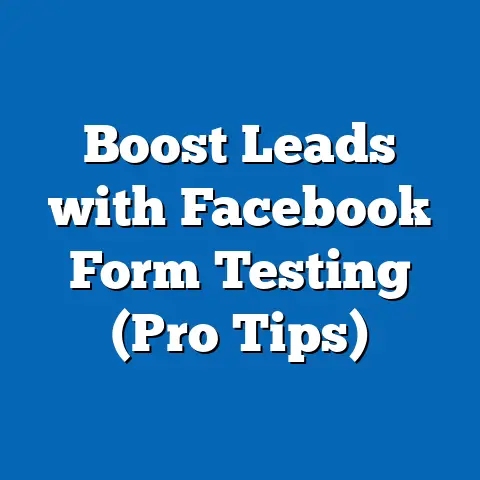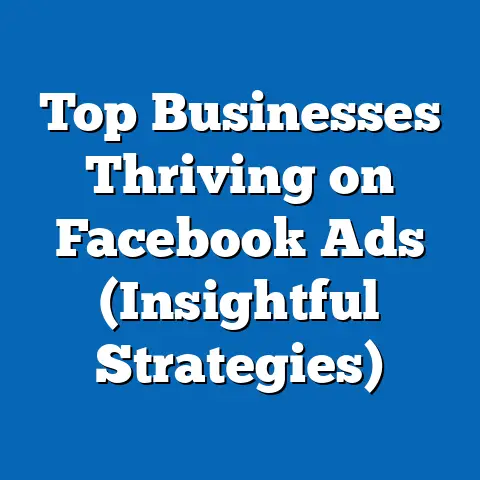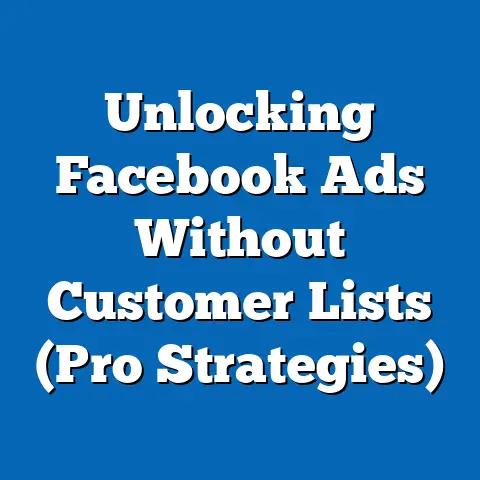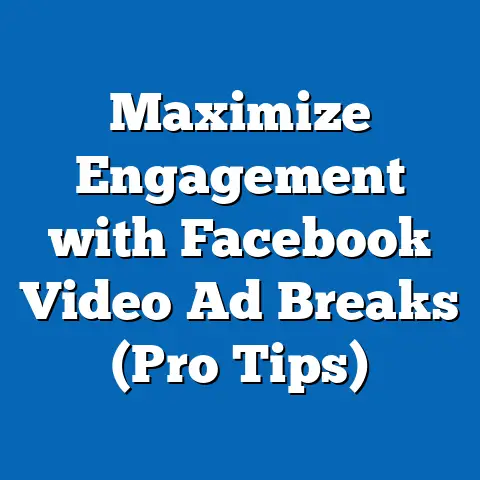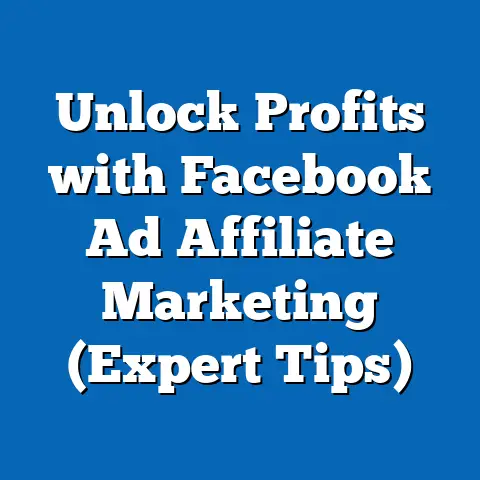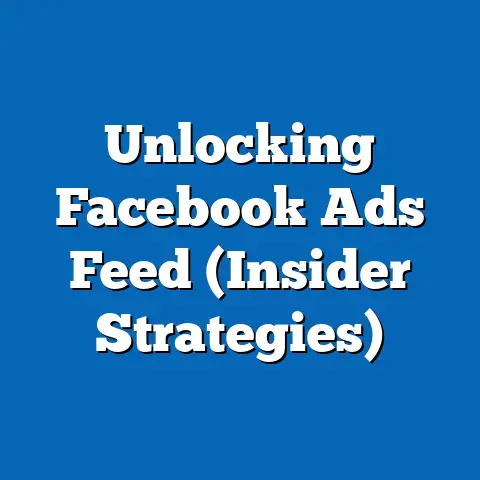Stop Wasting Budget: Cancel fb ad Boosts (Smart Strategy)
In the ever-evolving landscape of digital marketing, businesses of all sizes are constantly seeking ways to maximize their advertising budgets. One of the most accessible yet often misunderstood tools on social media platforms like Facebook is the “Boost Post” feature. While it promises quick visibility, many marketers are questioning its effectiveness and advocating for smarter strategies to optimize ad spend.
Regional Needs in Digital Advertising: Statistics, Trends, and Demographics
Understanding the digital advertising landscape requires a closer look at regional differences in consumer behavior, internet penetration, and marketing spend. These factors significantly influence how businesses allocate their budgets and choose platforms for advertising.
North America: High Digital Ad Spend with Evolving Preferences
In North America, digital advertising spending is projected to reach $282.1 billion in 2023, according to eMarketer, accounting for over 60% of total media ad spend in the region. The United States alone dominates this figure, with small and medium-sized businesses (SMBs) increasingly turning to social media platforms like Facebook to reach local audiences. However, a 2022 survey by Statista revealed that 54% of U.S. SMBs reported dissatisfaction with the ROI from boosted posts, citing poor targeting and lack of actionable analytics as key issues.
Demographically, North American users on Facebook skew slightly older, with 29% of users aged 35-54 as of 2023 (Pew Research Center). This demographic tends to engage more with organic content than paid boosts, suggesting that businesses may need to pivot toward more personalized ad formats to capture attention.
Europe: Fragmented Markets and Regulatory Challenges
Europe presents a more fragmented digital advertising market, with ad spend expected to hit €85.6 billion in 2023, per IAB Europe. Countries like Germany and the UK lead in social media ad investments, but stricter regulations under the General Data Protection Regulation (GDPR) have made targeting more complex. A 2021 report by eMarketer noted that 47% of European marketers reduced reliance on boosted posts due to privacy concerns and ineffective audience reach.
Demographic trends in Europe show a younger user base on Facebook compared to North America, with 25% of users aged 18-24 (Eurostat 2023). However, engagement rates for boosted posts among this group remain low, as younger users prefer platforms like Instagram and TikTok for brand discovery.
Asia-Pacific: Rapid Growth but Diverse Challenges
The Asia-Pacific region is the fastest-growing market for digital advertising, with spending forecasted to surpass $200 billion by 2025, according to Statista. Countries like India and Indonesia have seen massive increases in Facebook usage, with over 314 million and 119 million users, respectively, as of 2023 (DataReportal). Yet, the effectiveness of boosted posts is inconsistent due to varying levels of digital literacy and internet access across urban and rural areas.
Demographically, the region has a predominantly young user base, with 60% of Facebook users under the age of 35 (DataReportal 2023). Despite this, a 2022 survey by Hootsuite found that only 32% of businesses in the region reported satisfactory results from boosted posts, often due to cultural nuances and language barriers affecting ad relevance.
Latin America: Emerging Markets with High Engagement
In Latin America, digital ad spend is growing steadily, reaching $12.5 billion in 2022, with Brazil and Mexico leading the charge (Statista). Facebook remains a dominant platform, with over 200 million users in the region as of 2023 (DataReportal). However, boosted posts often fail to deliver due to limited budget allocation for sophisticated targeting tools among SMBs.
Demographically, Latin American users are highly engaged on social media, with 70% of Facebook users aged 18-34 (DataReportal 2023). While engagement is high, conversion rates from boosted posts remain low, with only 28% of businesses reporting positive ROI in a 2022 survey by eMarketer.
Africa and the Middle East: Untapped Potential with Infrastructure Gaps
Digital advertising in Africa and the Middle East is still in its nascent stages, with ad spend projected to reach $7.8 billion by 2025 (Statista). Facebook has a growing user base of over 250 million in the region, driven by mobile-first internet access (DataReportal 2023). However, boosted posts often underperform due to limited access to high-speed internet and low digital marketing expertise among local businesses.
Demographically, the user base is overwhelmingly young, with 65% under the age of 30 (DataReportal 2023). Despite this, only 25% of businesses in the region reported effective results from boosted posts, highlighting the need for tailored strategies that account for connectivity issues and cultural diversity (Hootsuite 2022).
Key Takeaway on Regional Needs
Across all regions, a common trend emerges: while Facebook remains a popular platform for advertising, the effectiveness of boosted posts is declining. Businesses are grappling with poor targeting, low ROI, and shifting user demographics. This sets the stage for a deeper examination of why boosted posts are often a budget drain and what smarter strategies can replace them.
The Problem with Facebook Boosted Posts: A Data-Driven Critique
Facebook introduced the “Boost Post” feature as a simple way for businesses to increase the visibility of their content. However, data and user feedback consistently show that this tool often fails to deliver meaningful results. Let’s break down the core issues with boosted posts using concrete evidence.
Limited Targeting Capabilities
Boosted posts offer minimal customization compared to Facebook’s full Ads Manager platform. A 2021 study by Social Media Examiner found that 62% of marketers who used boosted posts reported reaching irrelevant audiences, as the tool prioritizes broad reach over precise targeting. For example, boosting a post to “people who like your page and their friends” often results in low engagement, as the algorithm does not account for specific interests or behaviors.
In contrast, campaigns run through Ads Manager allow for detailed demographic targeting, lookalike audiences, and retargeting options. This discrepancy in functionality means businesses using boosts are essentially paying for impressions rather than conversions.
Poor Return on Investment
One of the most damning statistics about boosted posts comes from a 2022 report by WordStream, which found that the average cost-per-click (CPC) for boosted posts was 30% higher than for ads created through Ads Manager, while conversion rates were 25% lower. This suggests that businesses are paying more for less impactful results.
For SMBs with limited budgets, this inefficiency can be devastating. A case study by HubSpot in 2021 highlighted a small retailer that spent $500 on boosted posts over a month, generating only 10 clicks to their website, compared to a $500 Ads Manager campaign that resulted in 120 clicks and 15 conversions.
Lack of Analytics and Insights
Boosted posts provide limited data on performance, often showing only basic metrics like reach and engagement. According to a 2020 survey by Buffer, 58% of marketers using boosted posts felt frustrated by the lack of actionable insights, making it difficult to optimize future campaigns.
In contrast, Ads Manager offers detailed breakdowns of audience demographics, ad placement performance, and conversion tracking through tools like Facebook Pixel. Without this data, businesses are left guessing about what works and what doesn’t.
Historical Trends: Declining Effectiveness
Historically, boosted posts were more effective when Facebook’s organic reach was higher. In 2012, organic reach for business pages averaged around 16%, according to a study by EdgeRank Checker. By 2023, this figure has plummeted to under 5% (Hootsuite), forcing businesses to rely on paid options like boosts.
However, as more businesses boosted posts, the platform became oversaturated, and user fatigue set in. A 2019 report by Sprout Social noted a 20% decline in engagement rates for boosted posts compared to 2015, signaling that users are less likely to interact with content perceived as overtly promotional.
Demographic Differences in Boosted Post Performance
The effectiveness of boosted posts varies significantly across demographics, further underscoring their limitations. Let’s explore how different age groups, genders, and regions respond to this ad format.
Age-Based Engagement Patterns
Younger users (18-24) tend to have the lowest engagement with boosted posts, with only 3% clicking on sponsored content, according to a 2023 report by DataReportal. This group often perceives boosted posts as intrusive and prefers authentic, organic content or ads on platforms like TikTok.
In contrast, users aged 35-54 show slightly higher engagement rates (around 5%), as they are more likely to interact with local business promotions or event announcements (Pew Research Center 2023). However, even among this group, conversion rates remain low, as boosted posts rarely lead to meaningful actions like purchases or sign-ups.
Gender-Based Differences
Data on gender differences in boosted post engagement is less pronounced but still noteworthy. A 2022 study by Statista found that women are 10% more likely to engage with boosted posts than men, particularly for lifestyle and retail content. However, men show higher conversion rates for tech-related boosted posts, though the overall impact remains minimal across both genders.
Regional Variations
As highlighted in the regional needs section, boosted post performance varies widely by geography. In North America and Europe, where digital ad saturation is high, engagement rates for boosted posts hover around 2-3% (eMarketer 2023). In contrast, emerging markets like Latin America and parts of Asia-Pacific see slightly higher engagement (4-5%), but conversion rates are often negligible due to economic and infrastructural barriers (DataReportal 2023).
Smarter Alternatives to Boosted Posts: Data-Backed Strategies
If boosted posts are a budget waste, what can businesses do instead? The following strategies, supported by data, offer more effective ways to leverage Facebook advertising and beyond.
1. Leverage Facebook Ads Manager for Precision Targeting
Facebook Ads Manager provides robust tools for creating highly targeted campaigns. A 2022 study by WordStream found that ads run through Ads Manager had a 35% higher click-through rate (CTR) and a 40% lower CPC compared to boosted posts. Businesses can use custom audiences, lookalike audiences, and detailed interest targeting to reach the right people.
For example, a small e-commerce business targeting women aged 25-34 interested in sustainable fashion can create a tailored ad set in Ads Manager, resulting in higher relevance and conversions. Methodology-wise, Ads Manager campaigns should be tested with small budgets ($50-100) before scaling, using A/B testing to refine messaging and visuals.
2. Invest in Organic Content and Community Building
Rather than paying for boosts, businesses can focus on creating high-quality organic content that resonates with their audience. A 2021 report by Sprout Social found that posts with authentic storytelling or user-generated content had 50% higher engagement rates than promotional posts.
Building a community around a brand—through groups, live events, or interactive content—also fosters long-term loyalty. Data from Hootsuite (2023) shows that brands with active Facebook Groups see a 20% increase in organic reach without additional ad spend.
3. Diversify Platforms for Broader Reach
While Facebook remains a key player, diversifying ad spend across platforms like Instagram, TikTok, and LinkedIn can yield better results. For instance, TikTok ads targeting Gen Z users have an average engagement rate of 9%, compared to 3% for Facebook boosted posts (DataReportal 2023).
A balanced approach might allocate 50% of the budget to Facebook Ads Manager, 30% to Instagram (which integrates with Facebook’s ad system), and 20% to emerging platforms like TikTok, depending on the target demographic.
4. Use Retargeting for Higher Conversions
Retargeting campaigns, which show ads to users who have already interacted with a brand, are far more effective than broad boosted posts. According to a 2022 report by Criteo, retargeting ads on Facebook have a 70% higher conversion rate than standard display ads.
Businesses can set up retargeting using Facebook Pixel to track website visitors or past customers, ensuring ads are shown to warm leads rather than cold audiences. This strategy is particularly effective for e-commerce, where cart abandonment rates average 69% (Baymard Institute 2023).
Visualizing the Data: A Comparison Chart
To illustrate the differences, imagine a bar chart comparing key metrics across advertising methods. On the X-axis, you have “Boosted Posts,” “Ads Manager Campaigns,” “Organic Content,” and “TikTok Ads.” On the Y-axis, metrics like CTR (click-through rate), CPC (cost-per-click), and conversion rate are plotted.
- Boosted Posts: CTR 2%, CPC $1.20, Conversion Rate 1%
- Ads Manager: CTR 3.5%, CPC $0.80, Conversion Rate 2.5%
- Organic Content: CTR N/A, CPC $0, Engagement Rate 5%
- TikTok Ads: CTR 9%, CPC $1.00, Conversion Rate 3%
This visualization would highlight the inefficiencies of boosted posts compared to other methods, reinforcing the need for a strategic shift.
Historical Context: Evolution of Social Media Advertising
To fully understand the pitfalls of boosted posts, it’s helpful to look at how social media advertising has evolved. In the early 2010s, platforms like Facebook offered high organic reach, with businesses able to connect with audiences without significant ad spend. A 2013 study by Socialbakers found that organic reach for brand pages averaged 12-16%, making paid boosts unnecessary for many.
By 2016, however, algorithm changes prioritized personal content over business posts, dropping organic reach to under 6% (Hootsuite). This shift pushed businesses toward paid options like boosted posts, which initially seemed effective with engagement rates around 5-7% (Sprout Social 2016).
Fast forward to 2023, and the landscape has changed further. With over 3 billion monthly active users on Facebook (DataReportal), competition for attention is fierce, and boosted posts struggle to stand out. Engagement rates have dropped to 2-3%, while costs have risen by 20% since 2018 (WordStream 2023). This historical decline underscores the need for more sophisticated strategies beyond simple boosts.
Broader Implications and Future Trends
The inefficiencies of Facebook boosted posts are not just a budgetary concern—they reflect broader trends in digital marketing. As platforms evolve, businesses must prioritize precision, data analytics, and multi-channel approaches to stay competitive.
Shift Toward Data-Driven Advertising
The future of digital advertising lies in data-driven decision-making. Tools like Facebook Ads Manager, Google Analytics, and third-party platforms provide granular insights that boosted posts cannot match. A 2023 forecast by eMarketer predicts that 80% of digital ad spend will be allocated to programmatic and targeted campaigns by 2025, signaling the decline of broad-reach tools like boosts.
Rise of Short-Form Video Content
Another trend to watch is the rise of short-form video content, particularly on platforms like TikTok and Instagram Reels. Video ads have a 48% higher engagement rate than static posts on Facebook (Hootsuite 2023), suggesting that businesses should reallocate budgets toward dynamic formats rather than boosting static content.
Privacy and Personalization Balance
With increasing privacy regulations like GDPR and Apple’s App Tracking Transparency (ATT), businesses must balance personalization with user consent. Boosted posts, which often rely on broad targeting, are ill-suited for this new era. Instead, first-party data strategies—such as email lists and customer relationship management (CRM) integrations—will become critical for effective advertising.
Final Thoughts
Stopping the reliance on Facebook boosted posts is not just about saving money; it’s about adapting to a rapidly changing digital landscape. By understanding regional needs, demographic patterns, and historical trends, businesses can make informed decisions to optimize their ad spend. The data is clear: precision targeting through Ads Manager, investment in organic content, platform diversification, and retargeting offer far better ROI than boosted posts.
As digital marketing continues to evolve, the smartest strategy is to stay agile, test new approaches, and prioritize measurable results over quick fixes. Businesses that embrace these principles will not only stop wasting budget but also build stronger, more sustainable connections with their audiences.

